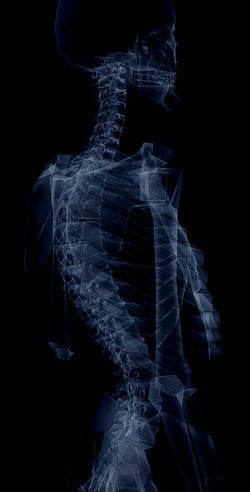JODI MATHY
HNI Senior Claims Consultant
 Your middle-aged workforce — while rich in experience, energy, and industry know-how — slowly is losing a quality-of-life battle. Back health starts to slide after age 35, and it happens to everyone. There are strategies, though, to lessen discomfort and head off major problems.
Your middle-aged workforce — while rich in experience, energy, and industry know-how — slowly is losing a quality-of-life battle. Back health starts to slide after age 35, and it happens to everyone. There are strategies, though, to lessen discomfort and head off major problems.
What is Degenerative Disc Disease?
Not truly a disease at all, Degenerative Disc Disease (DDD) refers to the pain caused by a damaged disc. It's hard to believe, but it is possible to have a damaged or herniated disc and not know it!
Sometimes these damaged discs show up on spinal images of people who have no symptoms. DDD typically occurs in the low back (lumbar), but it also can develop in the neck (cervical) or mid-back (thoracic).
Declining Back Health is Natural
I have to admit that I am middle aged. And as I sit here and write this blog post to inform others about DDD, my spine is degenerating. (Depressing thought, right?) As we age, our discs lose water content and become less flexible, more fragile, and, consequently, more susceptible to injury.
Discs are your spine’s shock absorbers. But, as part of the natural aging process, discs flatten and becomes less dense, easily leading to tears or ruptures.
Symptoms and Risk Factors for Degenerative Disc Disease
So how do you know if you have a disc problem? With problem discs, you may experience:
- Some arm or leg pain. This is because your spine is a conduit for the nerves that branch into your extremities.
- Numbness and tingling or weakness in your extremities.
The three main risk factors for DDD are age, weight, and occupation. The condition is most common in middle-aged adults 35 to 45 years old. In middle age, your discs are losing flexibility — yet you still are performing the same level of physical activity as always.
Excessive body weight can create excessive stress on your low back. Discs are becoming more fragile, and there's more mass squeezing down on them.
The work you do also can have an impact. People with physically demanding jobs that require frequent lifting, pushing, pulling, twisting, and bending are at a higher risk for DDD. In some jobs, your weakened discs are under constant stress!
Work Can Contribute to Poor Back Health
The name itself, Degenerative Disc Disease, may cause an employer to assume the condition is not work related. However, this is not always the case.
Because we all have natural degeneration of the spine, we all are at risk for DDD. The tipping point into poor disc health often is a traumatic or cumulative (exposure over a period of time) work injury. This event can cause DDD symptoms in an otherwise non-symptomatic person.
How Degenerative Disc Disease is Treated
Take heart — not all diagnoses of Degenerative Disc Disease lead to surgical intervention! The first steps to ease symptoms are medication and physical therapy.
If these conservative, non-surgical treatments fail, other options may include physician-recommended removal of disc material or possibly a spine fusion to provide added support.
Best Practices for Good Back Health
How can you protect your aging discs?
- First, we must all get some exercise. Just a light walking program can do wonders.
- Stretch before performing any physical activity. You would stretch if you were playing or sport or lifting weights, so why not stretch if you are performing a physical job?
- Maintain a healthy weight. Not only will you have less stress on your spine, but a healthy weight will provide many other health benefits.
Related Posts:
The Health Crisis in the Trucking Industry
Holistic Wellness Programs Incorporate a 360 Degree View of Health
Social Wellness Models: A New Way to Inspire Employees to Get Healthy
How to Customize an Onsite Care Program
.png?width=69&height=53&name=Acrisure%20Logo%20(White%20Horizontal).png)

![[Bucking Driver Turnover with Wellness] An interview with Melton Truck Lines](https://no-cache.hubspot.com/cta/default/38664/14e6d267-cd60-46ee-9c3e-764308b52892.png)
